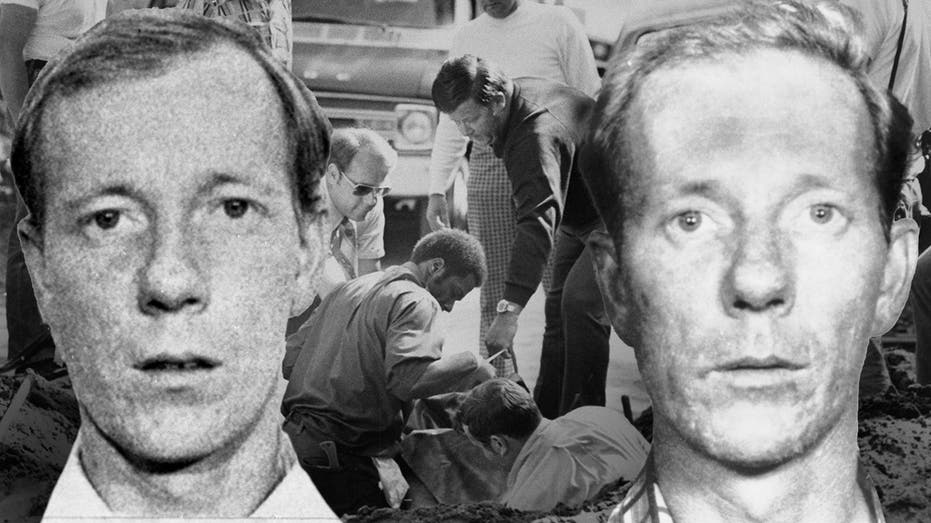Steve Fishman was 19 years old when he hitched a ride with a serial killer.
The aspiring reporter needed a ride to Connecticut, where he was interning at the Norwich Bulletin, his hometown newspaper. He was staying with a pal in Boston.
It was the fall of 1975, and, in those days, hitchhiking was common, Fishman explained.
I-70 SERIAL KILLER’S LONE SURVIVOR PLAYED DEAD TO SAVE HER LIFE: ‘THIS WAS NOT MY DAY TO BE TAKEN’
“If you didn’t have a car, you could just stick out your thumb,” he told Fox News Digital. “I had some great experiences hitchhiking, and I’d had some unsavory experiences that I didn’t want to repeat. But for whatever reason, I was not convinced that I should quit this habit.”
Fishman is now sharing his account in a new true-crime podcast from The Binge, “Smoke Screen: My Friend, the Serial Killer.”
“This was a story that had eaten at me for decades,” the host admitted. “It’s about my past – a past I was hesitant to dredge up. . . . And it’s a story filled with horror.”
Fishman recalled being relieved when a green Buick sedan slowed down and stopped. In the driver’s seat was a man who appeared at least a decade older with wispy red hair.
“Get in,” the driver commanded in a Southern drawl.
Fishman, eager to go home, jumped into the passenger seat.
FOLLOW THE FOX TRUE CRIME TEAM ON X
“This guy, who went by ‘Red,’ seemed very nice, very conversational,” said Fishman. “He was from Norwich and offered to show me a shortcut. He started taking me on smaller roads, which saved me time.”
Fishman, who yearned to “move up the ranks” at his paper, started asking Red questions. He was on the hunt for a fresh story.
Red confessed that he had just gotten out of prison.
“My first thought was, ‘That’s an interesting story – a guy reintegrating into the community after being away in a maximum-security prison. This would be great for our readers,'” said Fishman. “For whatever reason, I didn’t even think that this guy might be a dangerous criminal. I didn’t even ask what he’d been in for. But he was quite willing to speak for my story, so I was really happy.”
Red, who said he was out on parole, gave Fishman his phone number. He also told the budding reporter he needed to check in with his supervisor before speaking further.
When Fishman arrived at his destination, the car door struggled to open. Red shrugged it off and remarked, “I have to get that fixed.” Fishman said he let himself out with the help of an open window.
SIGN UP TO GET THE TRUE CRIME NEWSLETTER
Meanwhile, Fishman was certain that he had secured a major story for his paper. He didn’t think twice about giving Red’s supervisor a call.
“He couldn’t believe I was calling to do a story about this guy,” said Fishman. “He said, ‘Do you know what he was in for?’ I realized at that point that I hadn’t asked him. I was a pretty inexperienced reporter at that time. The supervisor then said, ‘You don’t want to know, and you’re not doing a story about him.’”
Fishman was disappointed, thinking he’d lost his big chance. It would be a few months later when he discovered Red’s identity.
“I’m in the newsroom, and suddenly these bells are ringing,” Fishman explained. “That meant there was an important national story. It turned out this was a story of a local man who had confessed to a series of rapes and murders up and down the East Coast. He also lived in Norwich. I saw this man’s photo and recognized him. It was Red. Then I learned he got all his victims by picking them up.”
“It was at that moment when I thought, ‘My God, I came really close,’” Fishman added.
Red was Virginia-born Robert Frederick Carr III, a serial killer who preyed on young hitchhikers. Three years earlier, he had raped and strangled two 11-year-old boys, Todd Payton and Mark Wilson, and a 16-year-old girl, Tammy Ruth Huntley, in the Miami area. When he gave Fishman a ride, Carr was on parole after serving time for a rape in Connecticut.
GET REAL TIME UPDATES DIRECTLY ON THE TRUE CRIME HUB
Carr murdered his fourth victim, 21-year-old Rhonda Holloway, shortly after Fishman met him. He buried the body in Connecticut.
At the time of Fishman’s discovery, Carr was arrested for the attempted rape of a hitchhiker in Miami. Carr then confessed to detectives that he had kidnapped and raped more than a dozen people. Carr said he had killed four of his victims.
For years, Fishman wondered why he was spared.
“I was not far out from his target group,” Fishman explained. “He was always on the hunt. And I later learned he was always on the hunt for a hitchhiker. I wasn’t a big guy at my age. I wasn’t even shaving yet. But maybe because I was athletic and a journalist, I seemed like a guy who was aggressive in certain ways. Maybe that made me someone not worth targeting.”
Fishman had questions – along with the number Carr gave him months ago. He called.
“He was in prison in Florida, but his wife answered,” said Fishman. “I became friendly with his wife, who was still in contact with him. She put in a word for me. And then he started calling the newspaper every day. I was finally doing that story. We were picking up where we left off.”
Carr invited Fishman to visit him.
“Looking back, it was weird that we were immediately in a comfortable rapport,” said Fishman. “He claimed he remembered me. We kind of struck up a relationship. He called me every day, and I would follow up on the leads he was telling me, doing my research. And he became a celebrity in the newsroom. How often does a serial killer call the newsroom of a small newspaper? But it was strange. This guy was talking to me in excruciating detail about killing two 11-year-old best friends. We were talking as if we’d met at the local café, and we were sharing the news of the day.”
“He also came to me with an agenda,” Fishman continued. “He wanted to be in control. He wanted to dictate the story. . . . He was arguing to me that if he’d been given proper treatment when he was first incarcerated, then he wouldn’t have gone on to rape and kill more people.”
Fishman eventually flew down to see Carr behind bars in Florida. He still wanted to know why he had survived.
“It was a weirdly awkward question, ‘Why not me?’” said Fishman. “As if I was feeling left out or something. I was saying, ‘Why didn’t you kill me?’ He just shrugged. There was an indication that me, being 19 at the time, he wasn’t going to mess with somebody he . . . couldn’t control.”
Fishman said he was determined to write his story. He wanted to know why the state of Connecticut hadn’t intervened and discovered that he was “a psychopath,” and put a halt to his crimes.
TED BUNDY’S EX-GIRLFRIEND RECALLS HORRIFYING ENCOUNTER WITH THE SERIAL KILLER: ‘HE JUST LAUGHED’
As Fishman listened to his recorded conversations with Carr, one thing became certain.
“This was a guy who was incredibly intent on offloading responsibility for the horrors he committed,” said Fishman. “He blamed it on everything, from the Connecticut state prison system to his upbringing. He blamed it on everything about his life except for the fact that he was a monster.”
“Carr would repeatedly say, ‘I had to kill him’ or, ‘I had to kill her,’” Fishman continued. “His logic was that he had to eliminate the only witness to his crime so he wouldn’t get caught. It was coldhearted. Ruthless. The mind of a serial killer is a frightening place to be.”
Carr died in 2007 at age 63. He was serving a life sentence.
Fishman said that years later, he wanted to “go inside the mind of a monster.” He still wanted to understand whether any of Carr’s brutal crimes could have been prevented. The podcast, he said, helped him come to terms with his past – and what could have happened to him.
“I wanted to know what should be done with a serial killer,” he said. “Are these people worthy of our . . . tax dollars, worthy of our efforts to rehabilitate them? What do I think should happen to somebody who has victimized kids, killed kids? As a father today, I had to answer that myself.”
























